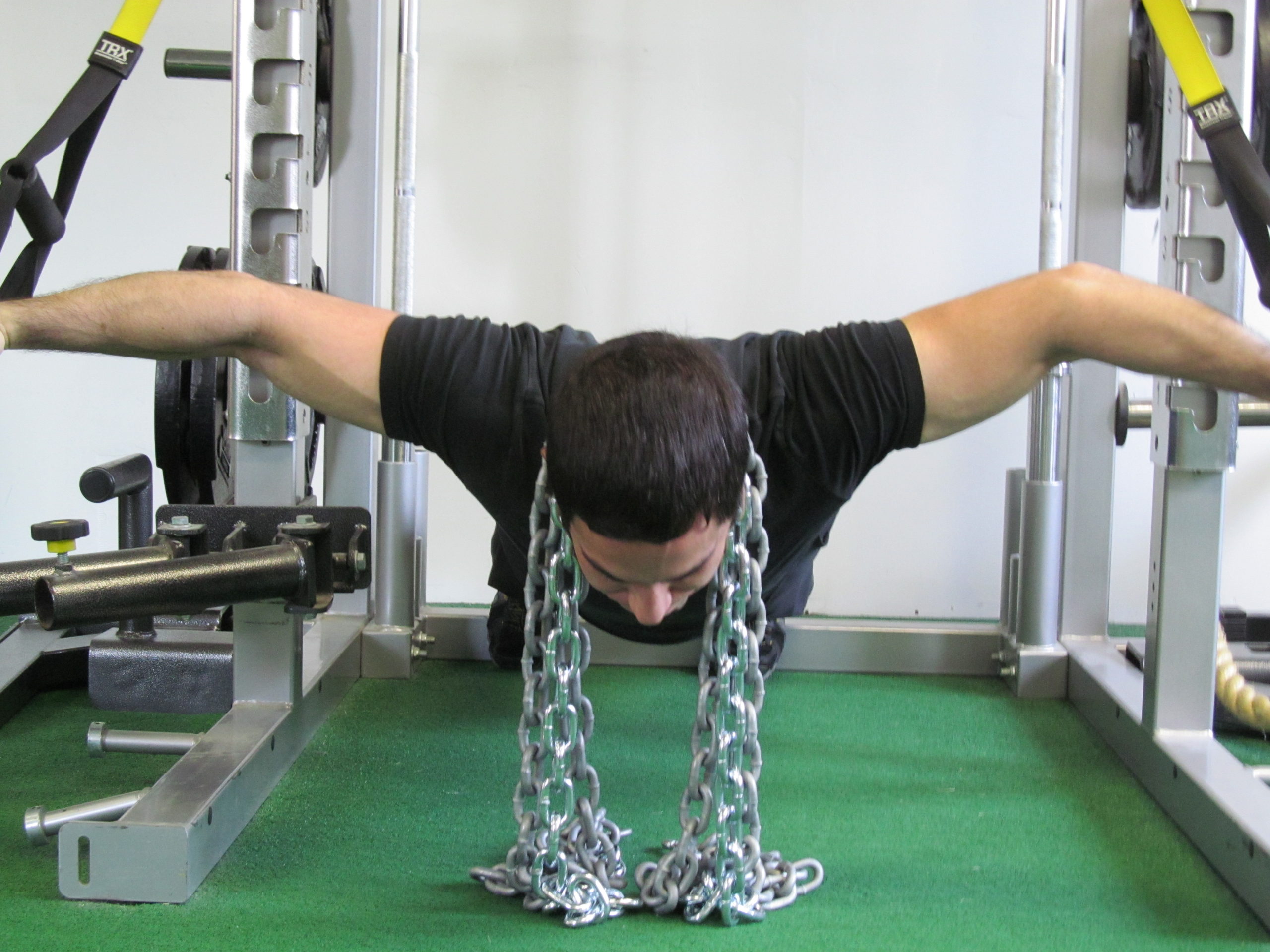On The Path to the Most Effective Chest Workout
(The Quest For Ponderous Pectorals!)
Anyone on a quest for ponderous pectorals should mind these four keys.
1. Always emphasize internal rotation
2. Angle your efforts in tangent with the majority of muscle fibres
3. Minimize inhibition from antagonist muscles
4. Maximize tension
1. Always emphasize internal rotation
As a concept, whenever you are trying to activate a muscle, your intention should be to approximate the insertion and the origin. To approximate the pectoral fibres, the humerus must internally rotate toward the sternum. Rotation of the humerus is made conspicuous by motion of the biceps. If the top of the biceps rotates toward the feet or the body the humerus is actively internally rotating. Conversely, if the top of the biceps is rotating toward the ears or away from the body the humerus is actively externally rotating. Pilgrims on the path to ponderous pectorals should choose exercises and adopt technique which places onus on internal rotation. The bench press (contrary to popular thinking) actually places a great emphasis on external rotation. Better exercise choices for chest development include flyes and dips.
2. Angle your efforts in tangent with the majority of muscle fibres
The bulk of pectoral fibres originate on the lower sternum. Essentially, the balance of your chest building efforts should involve your arms following a diagonal line from the shoulders to the opposite hip. Appropriately directed flyes and derivatives, cable cross-overs, dips and the decline bench press facilitate the appropriate angle of attack.
3. Minimize inhibition from antagonist muscles
You can do all the bench presses you want but if your rear deltoids are tight – your chest developing endeavors will be largely inhibited. Keep your antagonists supple by stretching or releasing them just prior to your chest building sets. Of course, managing muscle balance provides the ultimate long-term solution.
4. Maximize tension
With traditional flyes, peak tension occurs where the arms are parallel to the floor and then quickly drops off. It is possible to extend time in the high-tension zone by modifying technique or by using accommodating resistance.
Modify technique: Shorten the range of motion and increase repetitions. Spend your repetition time near parallel. Forty seconds of time spent in the bottom 1/3 of the range of motion (pertaining to flyes and flye derivatives) is far more effective than forty seconds spent over the whole range of motion.
Accommodating resistance: Accommodating resistance increases effort where the mechanics of an exercise normally provides an advantage. The mechanics of a dumbbell flye dictates that the top 1/3 of the range of motion provides very little tension. To accommodate this advantage, a training partner can increase effort by providing manual resistance with their hands – pressing against the exerciser’s forearms and wrists. The partner would increase pressure as the dumbbells neared each other. Other methods of accommodating resistance include using acceleration, elastic bands or chains.
The exercise below offers an example of all four keys in action. Note the following:
1) Biceps externally rotated at the start of the repetition
2) Biceps internally rotated at the finish of the repetition
3) Hands tending to gravitate from ear level to lower sternum
4) Chains providing accommodating resistance – increasing in load toward the top of the range of motion
5) My rear delts were stretched statically 30 seconds prior to this set!


